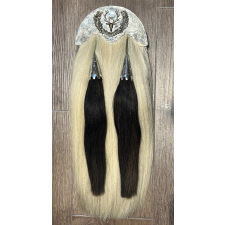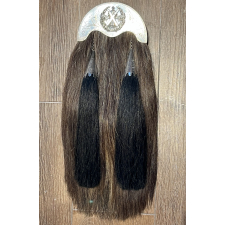Uniform & Accoutrements
Uniform and accoutements are widely collected and contain all working and ceremonial uniform. Over the centuries officers have dressed in fine uniforms enhanced by accoutrements and accessories such as aiguillettes, sabretache, cuirass, sashes, sporrans, spurs, musical instruments, drum majors’ batons and swagger sticks.
Militaria Uniforms and Accroutrements
Acquiring military uniform and accroutements can be from any branch of the military, including army, navy, air force, marines, and special forces, and dating back from the 17th century to the present day.
Why collect military uniforms?
There are many reasons why collectors may choose to collect military uniforms. Some collectors may be drawn to the aesthetic appeal of military dress, appreciating the unique designs and colours of different uniforms both for practical use and ceremonial.
Many collectors also see military uniforms to remember and honour the sacrifices of those who have served in the military. Collecting uniforms and other military memorabilia can be a way to pay tribute to the bravery and dedication of military personnel, as well as to commemorate significant events and conflicts in military history.
Ceremonial Uniform and Accountrements
Ceremonial uniforms and accoutrements are worn by military personnel during formal and ceremonial occasions, such as parades, state funerals, and official receptions. These uniforms and accoutrements are more ornate and decorative than standard military uniforms and are designed to convey respect, honour, and tradition.
Ceremonial uniforms can vary depending on the country and military branch, but they often include elements such as special hats or helmets, ceremonial swords or bayonets, medals, sashes, and gloves. They may also feature distinctive colours, fabrics, or patterns.
Accoutrements for ceremonial uniforms can include items such as ceremonial belts, gloves, footwear, and weapons. In some cases, these items may be purely decorative or symbolic, while in other cases they may serve a functional purpose in addition to their ceremonial role.
For militaria collectors, ceremonial uniforms and accoutrements can be particularly valuable and sought-after items. These items can be difficult to acquire, as they are often only produced in limited quantities and are typically reserved for use during special occasions.
How do I start collecting Military Uniforms and Accoutrements?
Start collecting today by creating a customer account for free and get lifetime access to buy and sell militaria with us.
Building a militaria uniform collection can be an exciting and rewarding hobby for history enthusiasts. Here are some steps to help you get started:
Before starting a collection, it's important to research and learn about the different types of militaria uniform and equipment - their history and their significance. Start by reading books, articles, and online resources on military uniforms and accoutrements. This will give you an understanding of the different types of uniforms and equipment used by various military forces throughout history.
Decide on your collecting goals, such as the era, country, regiment or type of militaria uniform that interest you. This will help you focus your collection and make informed decisions when buying new pieces.
How to care for your Military Uniform and Accoutrement Collection
Caring for antique military uniforms requires special attention and care to preserve their historical and sentimental value. Here are some tips on how to care for antique military uniforms:
- Avoid exposure to light: Direct sunlight and fluorescent light can cause fading and discoloration of the uniform. Store the uniform in a cool, dry, and dark place, such as a closet or drawer.
- Handle with care: When handling the uniform, wear clean gloves to avoid transferring oils from your skin to the fabric. Avoid pulling or stretching the fabric and be gentle when folding or unfolding the uniform.
- Clean carefully: Do not attempt to clean the uniform with water or any cleaning solutions. Instead, use a soft brush or vacuum with a soft brush attachment to remove dust and dirt.
- Store properly: To prevent damage from moths and insects, store the uniform in an airtight container, such as a plastic bin, with mothballs or cedar blocks. Avoid storing the uniform in plastic bags, as they can trap moisture and promote mold growth.
- Seek professional help: If the uniform is particularly fragile or has stains, seek the help of a professional conservator who specializes in textile conservation.
Remember that the uniform is a valuable piece of history, and proper care will ensure that it can be enjoyed for generations to come.
Overall, ceremonial uniforms and accoutrements are an important part of military tradition and culture, and are used to symbolize the honour, dedication and sacrifice of military personnel.























































